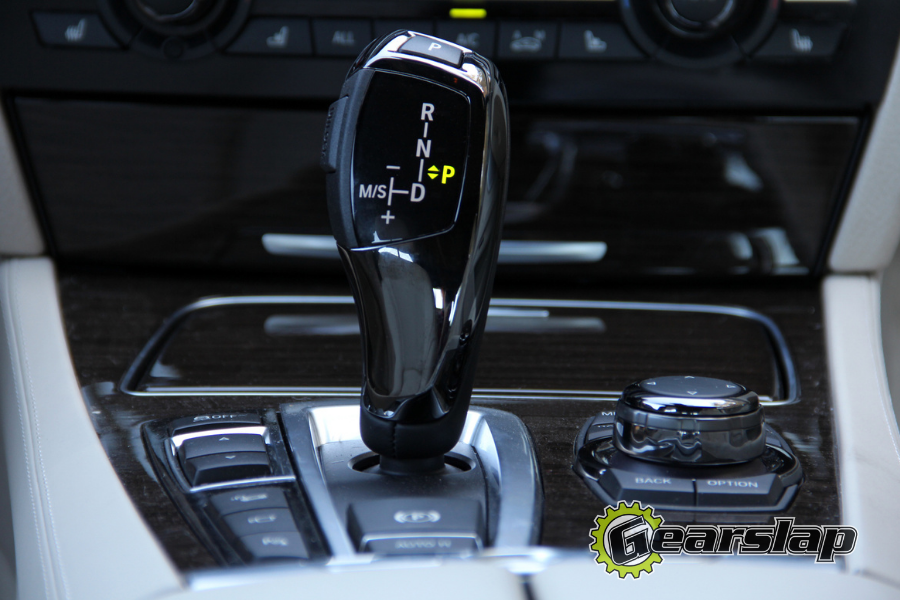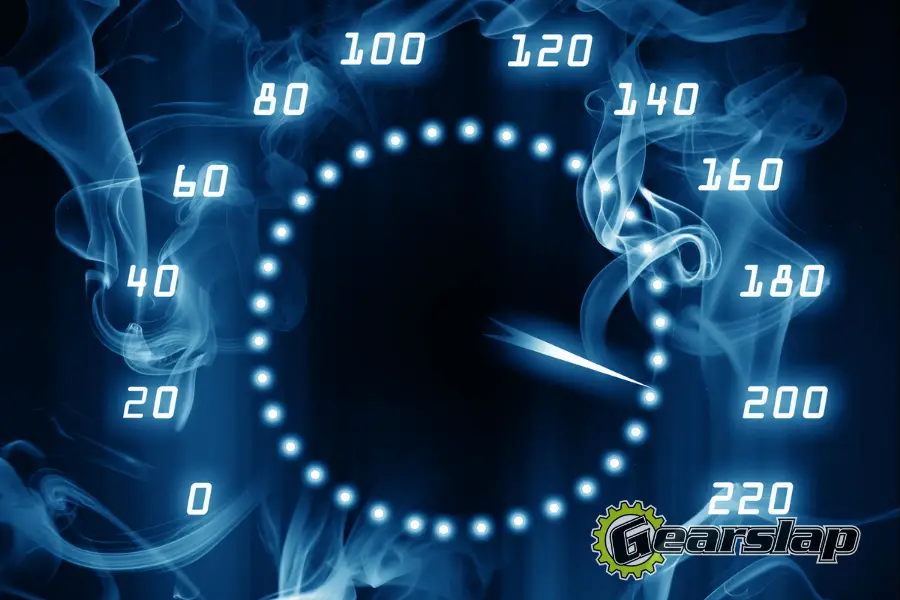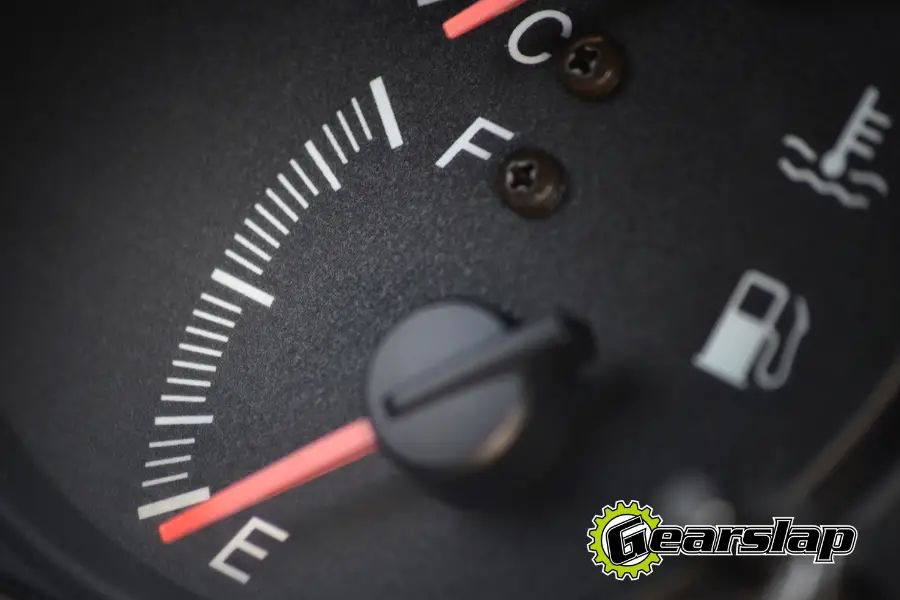One of the first times I rented a car as an “adult” was just after a minor fender bender. I had an SUV at the time that was brand new (a Nissan Xterra if you’re wondering, and no, it wasn’t my fault!) and I had to drop it at the shop to get fixed.
I thought it would be fun to get a sporty car as a replacement while my Xterra was in the shop getting repaired. I don’t really remember what I got now since it was only for a day, but I do remember that “I drove it like a rental car”.
That’s what you’re supposed to do right?!?
I probably got the worst fuel economy that car had ever experienced. The gas pedal was to the floor most of the time and the transmission was constantly in sports mode. Barely knowing what sports mode was, I thought it sounded faster than drive mode or eco mode… so it was used almost the whole time. (also, I’m still not sure if it’s called “Sport Mode” or “Sports Mode” if someone can clear that up for me, I’d appreciate it).

Do you know what it’s for and how to use it?
When you are seated behind the steering wheel in your vehicle, you may look over and notice an S on your car’s gear selector pattern alongside the other letters. If you’re wondering, S stands for sport.
Let’s learn all about sport mode, “S” on automatic shifters, so you can unlock the true performance potential of your car and take full advantage of this driving mode.
What Are D and S in Automatic Cars?
You shift between the transmission’s gears in an automatic car with the gear selector. The “D” on your car’s gear selector means ‘drive.’ Typically, there are a few other letters that represent different transmission gears you can select as needed.
The gear selector for automatic cars will usually have some or all of these:
- P for Park – locks the transmission to prevent movement
- R for Reverse – enables the transmission’s reverse gear so that you can back up the vehicle
- N for Neutral – disengages the transmission, allows you to rev the engine without moving
- D for Drive – as mentioned above, selecting this will allow you to move forward and cycle through all potential gear (including 6th gear, or overdrive in most cases. Sometimes the “D” is surrounded by a box with rounded corners – this will usually indicate “OverDrive”.
- L is for Low – low gearing will keep the transmission in lower gears. This usually increases RPMs (engine speed) and throttle response as it never engages overdrive.
- 1, 2 or D3 – these are sometimes used instead of “L” for selecting lower gearing. If you want to use your automatic transmission in “manual mode” on older vehicles, you just start at one and shift up as you go. Treat 1 as First Gear, 2 as 2nd Gear, etc.
- M or S – These are the modes we’ll discuss more below. They stand for Manual Mode and Sports Mode. Both of these selections will cause the transmission to act differently than if you are in “normal mode” – which is when you just have a prindle gear shift.
What the heck is a Prindle?
You may have read that last sentence and thought “what is a prindle on a car?” – and I asked the same thing. According to the “kids”, there are two types of cars – shifted and prindle cars.
A “Prindle Car” is the pneumonic version of PRNDL. It represents the letters on the shifter for Park, Reverse, Neutral, Drive and Low. It means the car has an automatic transmission.
My kids and their friends refer to the gear selector as the “Prindle” in the car. It took me forever to understand what they were talking about. Apparently, the younger generation calls it this because they don’t understand the concept of “selecting gears” as you would with a manual transmission.
A “Shift Car”, on the other hand, is one you have to manually shift. Also known as a “manual” or “standard”.
Smart Transmissions
Modern cars are by and large more efficient than older models. A lot of that efficiency comes from the transmission’s programming. The onboard computer prioritizes efficiency, so it works to get into the higher gears faster, where the car is less fuel-thirsty. That saves fuel, cutting down on emissions.
But sometimes, fuel savings isn’t a driver’s top priority. When you want to hold gears longer to accelerate faster, or you want the car to downshift aggressively for engine braking and powering through turns, consider switching the selector to S.
What Does S Stand for in a Car?
When it comes to driving modes in a car with an automatic transmission, S stands for sport. Some cars even have multiple S modes, like sport one and sport two, or sport plus. Each vehicle is different, so make sure to understand the operating manual fully.
Sport mode usually means a setting that deprioritizes efficiency in favor of more aggressive transmission operation. That means the car won’t upshift as quickly, helping you accelerate faster, and it’s more likely to downshift in anticipation of your next bout of acceleration.
Some cars even have other modes, like efficiency, eco, or comfort, where the car’s characteristics change to adapt to your changing needs.
What Is Sport Mode Good For?
Sport mode is good for encouraging the car to deliver more power or in other situations where you want to hold a gear longer. For instance, if you’re going down a steep road, you might want to enter sport mode, so the transmission stays in a lower gear, decreasing your forward momentum without having to hit the brakes. This is very useful in mountainous terrain where using the brakes too much on steep declines can cause them to overheat. By preventing unnecessary brake wear, you can save yourself a few dollars in maintenance costs as well. On some luxury cars, like the Mercedes Benz E-class, a set of brake pads can cost $300 or more.

What Is Sport Mode Used For?
Sport mode is used for a lot of situations where you need more dynamic control of your vehicle. Some specific situations that call for the use of sport mode include:
- Fun – just like with my rental car, Sport mode is just more fun. Especially if you use it on a car that has paddle shifters as well. You feel like an F1 driver… sort of.
- Accelerating rapidly from a stop – delivers maximum power for quicker acceleration, holding gears longer
- Overtaking on the highway – downshifts if needed and boosts power to get by slower drivers
- Driving down a long hill – takes advantage of engine braking to preserve the brakes
- Spirited driving on twisty roads – holds the best gear for negotiating the roadway aggressively
When Should I Shift in Sport Mode?
You should check your owner’s manual carefully to understand what’s best for your vehicle. But typically, you can shift into sport mode whenever you see a need to prioritize acceleration and performance over efficiency.
While you’re in sport mode, your automatic transmission will still shift gears on its own. It will just do so more aggressively.
Can You Shift to Sport Mode While Driving?
All cars are different, but you can usually shift to S while driving and activate sport mode.
Just shift carefully. You don’t want to select neutral accidentally. Some carmakers have moved away from using the gear shifter to select sport mode, so some cars now have a sport button on the dash or the steering wheel to make it easier.
FAQ: More Questions About Sport Mode
There are some questions that come up all the time about sport mode. Let’s look at the answers.
Is Sport Mode Bad for Your Car?
I once had a car salesman tell me that the best way to shorten the lifespan of a car is to perform cavalier starts and stops. He was a little too stodgy for me, so I had to buy my Ford Mustang elsewhere, but he was right.
If you abuse your car by subjecting it to non-stop hard accelerations and aggressive braking, it probably won’t last.
But in and of itself, sport mode isn’t bad for your car at all. It’s just an operating mode that gives you more aggressive settings. It’s up to you how often you use it and how hard you work your vehicle.
Is Sport Mode More Fuel-Efficient?
No, sport mode is less fuel-efficient. It will cause increased fuel consumption. When you select sport mode, you are accessing an operating mode where efficiency goes on the back burner, and performance becomes the priority.
Is Sport Mode Good for Snow?
brakes. In snowy conditions with low-traction situations, where applying the brakes might cause instability, this could be a big help to the driver. Some cars, like the Lamborghini Urus, even have dedicated driving modes for changing road and weather conditions. Press a button to engage off-road
Does Sport Mode Make Your Car Louder?
It might. Some cars change multiple operating parameters when you enter sport mode. At its simplest, sport mode only changes the behavior of the transmission.
But on some vehicles, engaging sport mode will also change the exhaust note. That might be due to opening exhaust valves to enhance the sound or even adjusting the engine mapping for more power.
Some vehicles go even a step further and change the damping settings, steering feel, ride height, and more. All of these changes to the suspension, steering, engine, and transmission combine to deliver a sportier drive.
Is Sport Mode a Manual Transmission?
Sport mode isn’t the same as manual. A true manual transmission has a third pedal in addition to the brake and accelerator. The driver controls the engagement and disengagement of the clutch, and they select the gears using a gear shifter typically with an H-pattern. To get a better idea of how to operate a manual transmission, check out the skills of one of the best motorsport drivers of all time, Ayrton Senna. You can see how his feet and hands work the steering wheel, gear selector, and pedals in concert.
Some automatic transmissions have the ability to engage a manual mode where the driver can select gears. Unlike on a traditional manual transmission, they don’t have to control the clutch with a third pedal. Instead, they control the shifts via the gear lever, buttons, or sometimes paddle shifters on the steering wheel.
That’s different from sport mode, where the car still shifts automatically. For instance, if you’re in gear number two in a manual, it will stay there until you change it, even if you get to the RPM redline. In sport mode with an automatic, the car will shift up to third gear or down to first on its own eventually.



